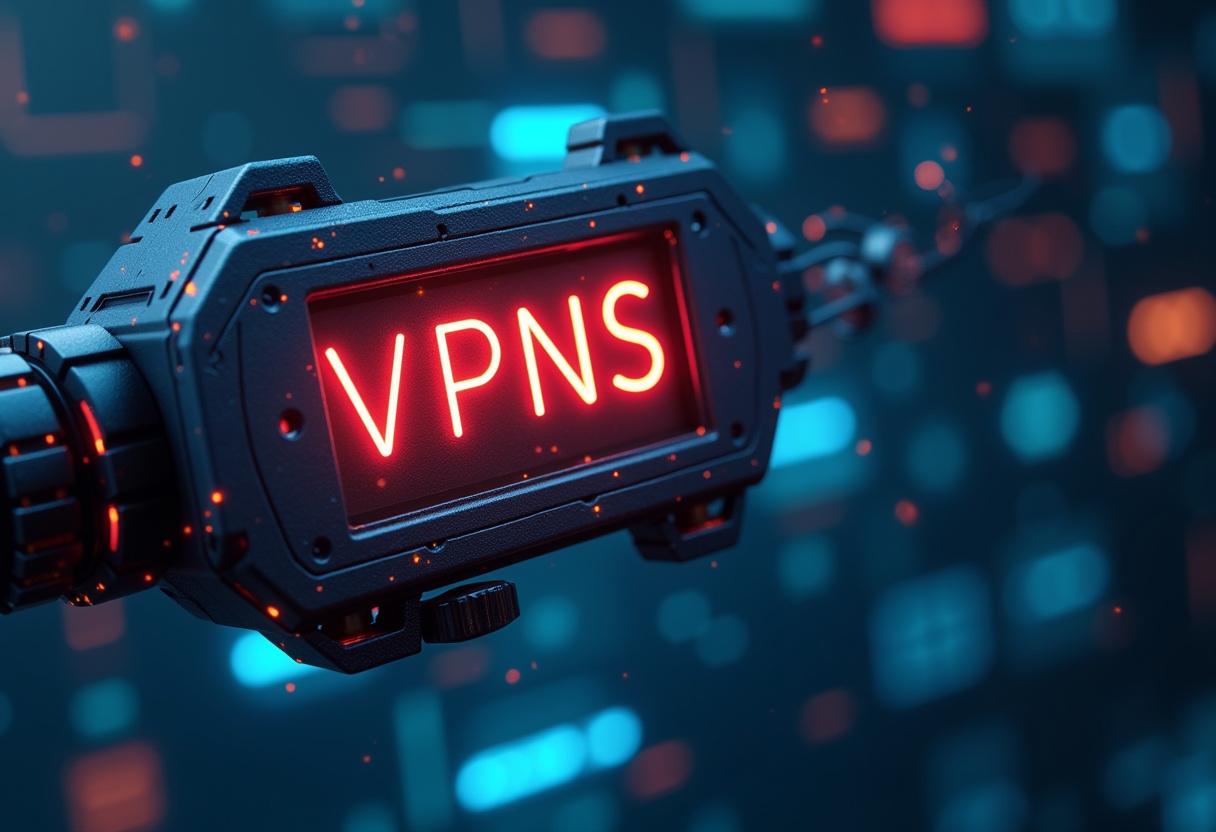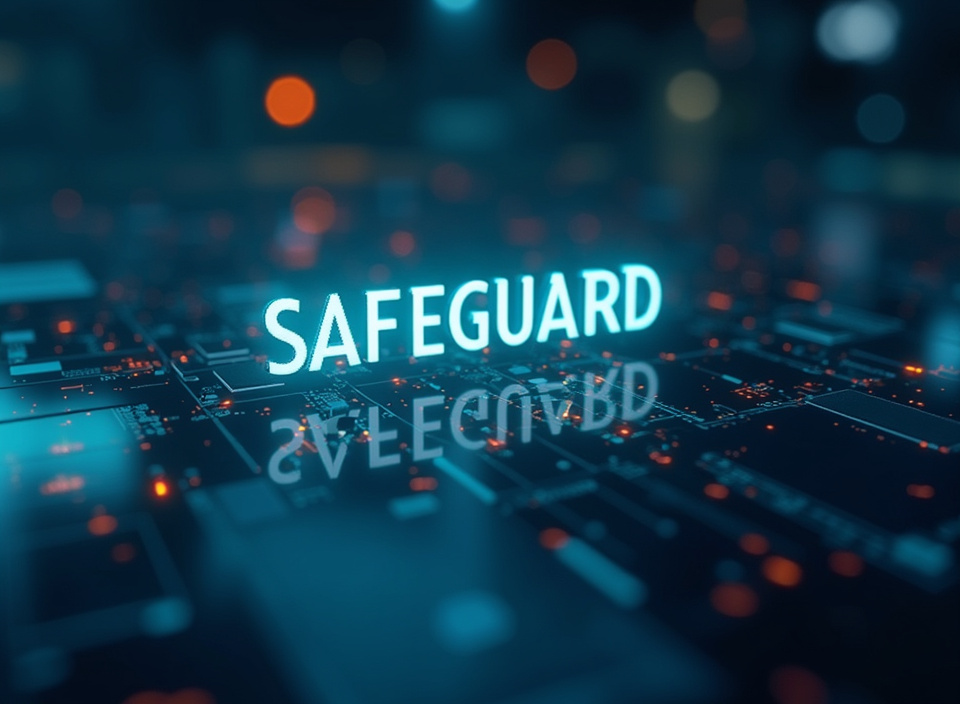VPNs for Robotics Innovators: Securing Development Data

Table of Contents
The robotics industry, a dynamic convergence of engineering, computer science, and artificial intelligence, is rapidly transforming industries and reshaping the future. At the heart of this transformation lies a wealth of sensitive development data, encompassing proprietary designs, intricate algorithms, experimental results, and meticulously crafted source code. This data, the lifeblood of innovation, is not only valuable but also increasingly vulnerable to a myriad of cyber threats.
Robotics innovators, ranging from individual researchers in university labs to expansive engineering teams within multinational corporations, face the daunting challenge of safeguarding this critical information while fostering seamless collaboration and driving rapid progress. In this complex environment, a Virtual Private Network (VPN) emerges as an indispensable tool, offering a robust shield against data breaches, intellectual property theft, and unauthorized access to critical systems. A VPN's ability to encrypt data traffic, mask IP addresses, and create secure tunnels for data transmission provides a crucial layer of protection, enabling robotics innovators to operate with confidence in an increasingly precarious digital landscape.
This article explores the pivotal role of VPNs in securing development data for robotics innovators. We delve into the multifaceted benefits offered by VPN technology, including enhanced security, seamless collaboration, and improved access to restricted content. By providing a deep understanding of how VPNs function and how they can be effectively implemented, this article empowers robotics innovators to make informed decisions about their data security strategies.
The exploration extends beyond mere theoretical concepts, examining practical considerations and actionable best practices for integrating VPNs into existing robotics development workflows. This includes analyzing different VPN protocols, evaluating server locations, and assessing the impact of VPNs on network performance. Furthermore, the article addresses the specific security challenges unique to the robotics industry, such as the vulnerability of robotic systems to remote attacks and the potential for data breaches during collaborative projects.
By highlighting these vulnerabilities, the article underscores the importance of a proactive and comprehensive approach to data security, with VPNs serving as a foundational element. VPNs empowers robotics innovators by providing a centralized solution that addresses multiple security concerns simultaneously. By encrypting data traffic, VPNs protect sensitive information from eavesdropping and interception, ensuring that confidential data remains protected even when transmitted across public networks.
By masking IP addresses, VPNs provide an additional layer of anonymity, making it more difficult for malicious actors to trace data back to its source. By creating secure tunnels for data transmission, VPNs enable remote access to sensitive resources without compromising data integrity. Moreover, the integration of VPNs into robotics development workflows fosters a culture of security awareness and promotes best practices for data protection.
By providing a readily available and easy-to-use security tool, VPNs empower individuals and teams to take ownership of their data security and to proactively mitigate potential risks. This proactive approach is essential for maintaining a competitive edge in the rapidly evolving robotics landscape. The ability to collaborate securely, access restricted content, and protect intellectual property is crucial for driving innovation and achieving long-term success.
Ultimately, the adoption of VPNs by robotics innovators represents a strategic investment in the future of the industry. By prioritizing data security and embracing the capabilities of VPN technology, innovators can unlock new opportunities for collaboration, accelerate their research and development efforts, and safeguard their invaluable intellectual property.
The escalating complexity of the cyber threat landscape presents a significant challenge to the robotics industry, demanding a paradigm shift in how development data is secured. Traditional security measures, while important, are often insufficient to protect against sophisticated attacks targeting sensitive information. The vulnerabilities inherent in robotics development, amplified by remote collaboration and reliance on interconnected systems, necessitate a multi-layered security approach, with VPNs playing a vital role in defense.
The vast amounts of data generated during robotics development, encompassing intricate designs, proprietary algorithms, experimental results, and meticulously crafted source code, are highly attractive targets for malicious actors. Cybercriminals may seek to steal intellectual property for financial gain, sabotage systems to disrupt operations, or gain a competitive advantage by accessing confidential information. The routes of exposure are numerous, spanning compromised networks, vulnerable IoT devices, insecure cloud storage, and unprotected data transfers.
These entry points can be exploited to infiltrate systems, intercept data, and exfiltrate sensitive information. A well-configured VPN acts as a primary line of defense against these threats, providing a secure and encrypted tunnel for data transmission. By encrypting all traffic passing through the VPN, sensitive information is rendered unreadable to potential eavesdroppers, preventing data breaches and unauthorized access.
Moreover, VPNs mask the user's IP address, obscuring their location and making it more difficult for attackers to trace the data back to its origin. This added layer of anonymity enhances security, particularly when accessing public networks or working in regions with heightened cyber security risks. The importance of VPNs extends beyond data transmission, encompassing secure remote access to development environments, control systems, and sensitive resources.
Robotics innovators often require remote access to internal networks, file servers, and specialized software, creating potential vulnerabilities if not properly secured. A VPN provides a secure gateway, allowing authorized users to access these resources remotely without compromising data integrity. By establishing an encrypted connection between the user's device and the internal network, a VPN ensures that sensitive data remains protected, even when accessed from untrusted locations.
In addition to protecting against external threats, VPNs can also help to mitigate insider risks by providing a secure and auditable channel for data access. By monitoring VPN usage, organizations can track who is accessing sensitive information and identify potential security breaches. This enhanced visibility can help to deter malicious activity and improve overall security posture.
Beyond security benefits, VPNs also enhance collaboration and productivity by enabling seamless and secure communication among geographically dispersed teams and stakeholders. Robotics projects often involve collaboration between engineers, scientists, and designers located around the world, requiring secure and reliable communication channels for sharing sensitive data and collaborating on complex projects. A VPN ensures that all communication between collaborators is encrypted, preventing unauthorized access to sensitive information.
By providing a secure and reliable communication infrastructure, VPNs empower robotics innovators to collaborate effectively, accelerate their research and development efforts, and remain at the forefront of innovation, addressing all intellectual property protection concerns.. The combination of robust encryption, IP address masking, and secure remote access makes VPNs an essential tool for protecting sensitive development data in the face of increasingly sophisticated cyber threats. The integration of VPNs into a comprehensive security strategy is critical for ensuring the confidentiality, integrity, and availability of information, safeguarding intellectual property protection, and maintaining a competitive edge in the rapidly evolving robotics industry.
Beyond the realm of pure security, VPNs play a crucial role in fostering seamless and secure collaboration amongst robotics innovators, regardless of their geographical distribution. The collaborative nature of robotics, where expertise and resources are often spread across different locations, necessitates tools that facilitate efficient and secure data sharing and communication. VPNs act as a bridge, connecting disparate teams and individuals in a secure environment, ensuring that sensitive development data remains protected while enabling real-time collaboration and knowledge sharing.
In today's globally interconnected research and development landscape, collaboration is no longer a luxury but a necessity for driving innovation and accelerating the pace of technological advancement. Robotics projects invariably involve teams of engineers, scientists, designers, and researchers who are often located in different countries, time zones, and organizations. These teams need to collaborate effectively, share design documents, exchange experimental results, jointly develop code, and communicate seamlessly to achieve their shared goals.
VPNs provide the secure and reliable communication infrastructure required for such collaboration to thrive. By establishing an encrypted tunnel between collaborators, VPNs ensure that all data transmitted between them remains confidential and protected from unauthorized access. This is particularly crucial when sharing sensitive design files, proprietary algorithms, and experimental results that represent valuable intellectual property.
This ensures that sensitive information is shielded from prying eyes, protecting against potential data breaches and intellectual property theft. VPNs enable real-time collaboration on complex robotic projects, facilitating seamless design reviews, collaborative coding sessions, and remote access to shared resources. Teams can use VPNs to securely connect to central repositories of design files, simulation models, and code libraries, enabling them to work together in real-time, regardless of their physical location.
This fosters a sense of shared ownership and accelerates the pace of development, allowing teams to rapidly iterate on designs, identify and fix bugs, and ultimately bring innovative products to market faster. Moreover, VPNs can be used to securely connect to remote testing facilities and robotic platforms, allowing teams to conduct experiments and gather data without having to physically be present at the test site. This is particularly valuable for robotics projects that require access to specialized equipment or environments that are not readily available in every location.
By enabling remote access to these resources, VPNs expand the possibilities for robotics innovation and facilitate more efficient use of existing infrastructure. Another aspect of collaboration that VPNs enhance is the ability to share knowledge and expertise across geographical boundaries. Robotics innovators can use VPNs to securely connect to online forums, discussion groups, and educational resources, enabling them to learn from others, seek advice, and share their own insights with the broader robotics community.
This fosters a culture of open collaboration and accelerates the dissemination of knowledge, ultimately driving innovation and progress in the entire robotics field. VPNs, however, also ensure that the information shared remains limited to the intended audience. VPNs are not just limited to facilitating collaboration among internal teams; they can also be used to securely connect with external partners, suppliers, and customers.
This is particularly important in the robotics industry, where collaborations often extend beyond organizational boundaries. VPNs enable secure data exchange between different organizations, ensuring that sensitive information is protected during transit and that only authorized individuals have access to it. By fostering secure collaboration with both internal and external stakeholders, VPNs facilitate the development of innovative robotics solutions and drive the overall growth of the industry.
VPNs are not just about security; they are about enabling a more connected and collaborative future for robotics innovation. By providing a secure and reliable communication infrastructure, VPNs empower robotics innovators to collaborate effectively, share knowledge, and develop cutting-edge solutions that address the challenges of the 21st century.
The selection of a suitable VPN service represents a critical decision for robotics innovators, requiring careful evaluation of various factors to ensure optimal security, performance, and usability. Not all VPNs are created equal, and choosing the wrong one can have significant consequences for data security and collaboration. A comprehensive assessment of security protocols, server locations, connection speed, logging policies, jurisdiction, and ease of use is essential for making an informed decision.
Security Protocols constitute the bedrock of a VPN's security posture. Robotics innovators should prioritize VPNs that employ robust encryption protocols, such as OpenVPN, IKEv2/IPsec, or WireGuard. These protocols offer strong encryption algorithms, ensuring that data remains protected from unauthorized access.
OpenVPN, widely regarded as one of the most secure and reliable protocols, utilizes the OpenSSL library for encryption and supports a variety of cipher suites. IKEv2/IPsec is another popular protocol that offers robust security, especially for mobile devices. WireGuard, a relatively newer protocol, boasts a streamlined codebase and promises faster speeds and improved security.
It's a good idea to do a thorough testing of what protocols fit the company best. Server Locations play a crucial role in influencing connection speed, accessing geo-restricted content, and circumventing censorship. Robotics innovators should select VPNs with a vast network of servers strategically located around the world.
A wide range of server locations ensures that users can connect to servers that are geographically close to their location, minimizing latency and improving connection speed and intellectual property protection. It also allows access to content that is restricted to certain regions, which can be valuable for research and development purposes. Connection Speed is paramount for seamless robotics development and collaboration, particularly for real-time applications such as remote control of robotic systems and video conferencing.
Robotics innovators should opt for VPNs with fast and reliable connection speeds that do not significantly impede their workflow. Conducting speed tests with different VPN servers is crucial for assessing performance. The user should consider that speed can be impacted by the distance between the server and the device, as well as the server load.
Logging Policies define the extent to which a VPN service collects and stores user data. Robotics innovators should prioritize VPNs that adhere to strict no-logs policies, meaning they do not collect or store any information about user activity, browsing history, or connection logs. A no-logs policy ensures that user privacy is protected and that there is no data to be shared with third parties or government agencies.
Jurisdiction refers to the country in which the VPN service is legally based. Robotics innovators should carefully consider the jurisdiction of a VPN, as it can have implications for data privacy and security. VPNs based in countries with strong data protection laws are generally preferable, as they provide greater assurance that user data will be protected from government surveillance and third-party access.
Ease of Use is an important consideration, especially for robotics innovators who may be less familiar with VPN technology. Robotics VPNs should feature user-friendly interfaces and intuitive settings, allowing users to connect to the VPN and configure settings without difficulty. The compatibility of VPNs with different operating systems and devices is also crucial, as robotics innovators often use a variety of devices for their work.
A top choice for robotics innovators should offer comprehensive customer support, including detailed online documentation, FAQs, and responsive email or chat support. Prompt and helpful support can be invaluable for troubleshooting technical issues and resolving any questions or concerns that may arise. Finding VPNs that offer features tailored to the needs of robotics innovators, such as port forwarding, custom DNS settings, and kill switches, can further protect intellectual property and enhance their overall VPN experience.
The decision should be based on a thoughtful assessment of security protocols, server locations, connection speed, logging policies, jurisdiction, ease of use, and customer support. By making an informed choice, robotics innovators can equip themselves with a powerful tool for safeguarding their development data, enabling secure collaboration, and driving innovation in the robotics landscape.
In conclusion, the integration of VPN technology into the workflows of robotics innovators is no longer a luxury but a necessity for ensuring data security, enabling seamless collaboration, and fostering a culture of innovation in the face of escalating cyber threats. The sensitive nature of robotics development data, encompassing proprietary designs, intricate algorithms, experimental results, and meticulously crafted source code, demands robust protection against unauthorized access, data breaches, and intellectual property theft. VPNs provide a comprehensive solution by encrypting data traffic, masking IP addresses, and creating secure tunnels for data transmission, safeguarding sensitive information from prying eyes and malicious actors.
Throughout this article, we have explored the multifaceted benefits of VPNs for robotics innovators, highlighting their ability to enhance security, facilitate collaboration, and improve access to restricted content. We have delved into the specific security challenges unique to the robotics industry, such as the vulnerability of robotic systems to remote attacks and the potential for data breaches during collaborative projects, underscoring the importance of a proactive and comprehensive approach to data security. The selection of a suitable VPN service requires careful consideration of various factors, including security protocols, server locations, connection speed, logging policies, jurisdiction, and ease of use.
Robotics innovators should prioritize VPNs that offer strong encryption protocols, a vast network of servers strategically located around the world, fast and reliable connection speeds, strict no-logs policies, and user-friendly interfaces. By making an informed choice, robotics innovators can equip themselves with a powerful tool for safeguarding their development data, enabling secure collaboration, and driving innovation in the robotics landscape. The implementation of a VPN strategy should not be viewed as a one-time fix but rather as an ongoing process that requires regular monitoring, maintenance, and adaptation to evolving security threats.
Robotics innovators should stay informed about the latest cyber security threats and best practices, and they should regularly update their VPN software and security protocols to ensure that they remain protected against emerging vulnerabilities. They should also implement strong password policies, enable multi-factor authentication, and educate their employees about cyber security risks and best practices. A culture of security awareness is essential for ensuring that all members of the robotics team understand the importance of data security and take proactive steps to protect sensitive information.
By fostering a culture of security, robotics innovators can create a more secure and resilient environment for innovation to thrive. Beyond the technical aspects of VPN implementation, it is essential for robotics innovators to establish clear policies and procedures for VPN usage. These policies should define who is authorized to use the VPN, what types of data can be transmitted through the VPN, and what security protocols must be followed.
They should also outline the consequences of violating the VPN usage policy. Enforcing a clear and well-communicated VPN usage policy is crucial for ensuring that all members of the robotics team comply with security best practices and that the VPN is used responsibly. A comprehensive and well-executed VPN strategy can significantly improve the security posture of robotics organizations, protect their intellectual property, and foster a culture of innovation.
By embracing the capabilities of VPN technology, robotics innovators can unlock new opportunities for collaboration, accelerate their research and development efforts, and safeguard their invaluable intellectual property. As the robotics industry continues to evolve, the importance of data security will only continue to grow. Robotics innovators who prioritize data security and embrace the capabilities of VPN technology will be well-positioned to thrive in the 21st century and to drive the future of robotics innovation, knowing that they are safeguarding their valuable data and protecting their intellectual property.
The convergence of robotics and secure VPN technology paves the way for a future where innovation is unhindered by security concerns, with VPNs enabling a seamless and secure environment for robotics advancements to push the boundaries of what is possible. In this ecosystem of robotics-centered VPN use, new and innovative AI can be created.
Stay Updated
Get the latest VPN news, tips, and exclusive deals to your inbox.




